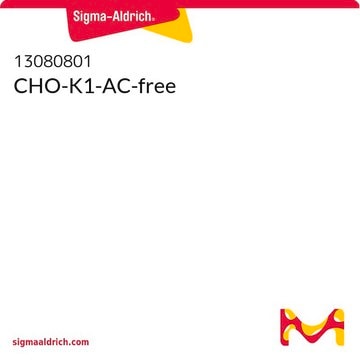CHOK1
CHOZN® CHO K1 Host Cell Line
Suspension-adapted in CD media
About This Item
Productos recomendados
descripción
CHOK1 cell line derived from ECACC CHO K1
Nivel de calidad
Condiciones de envío
dry ice
temp. de almacenamiento
−196°C
Categorías relacionadas
Descripción general
Origen línea celular
Forma física
Información legal
Código de clase de almacenamiento
10 - Combustible liquids
Clase de riesgo para el agua (WGK)
WGK 3
Punto de inflamabilidad (°F)
Not applicable
Punto de inflamabilidad (°C)
Not applicable
Elija entre una de las versiones más recientes:
Certificados de análisis (COA)
¿No ve la versión correcta?
Si necesita una versión concreta, puede buscar un certificado específico por el número de lote.
¿Ya tiene este producto?
Encuentre la documentación para los productos que ha comprado recientemente en la Biblioteca de documentos.
Artículos
Understand how considerations such as DMSO concentrations and freezing techniques are key in the successful implementation of high cell density cryopreservation (HCDC).
Understand how considerations such as DMSO concentrations and freezing techniques are key in the successful implementation of high cell density cryopreservation (HCDC).
Understand how considerations such as DMSO concentrations and freezing techniques are key in the successful implementation of high cell density cryopreservation (HCDC).
Understand how considerations such as DMSO concentrations and freezing techniques are key in the successful implementation of high cell density cryopreservation (HCDC).
Contenido relacionado
Learn more about cell line development and the relevant products you need for this process.
Learn more about cell line development and the relevant products you need for this process.
Learn more about cell line development and the relevant products you need for this process.
Learn more about cell line development and the relevant products you need for this process.
Nuestro equipo de científicos tiene experiencia en todas las áreas de investigación: Ciencias de la vida, Ciencia de los materiales, Síntesis química, Cromatografía, Analítica y muchas otras.
Póngase en contacto con el Servicio técnico




